I had started this High-Power-Opamp-thread:
https://www.eevblog.com/forum/projects/opa541-high-power-opamp-die-pictures/Unfortunately there is a OPA541 in the headline and I got some more High-Power-Opamps.

In future I will post High-Power-Opamps in this thread.
And now welcome the PA-03:
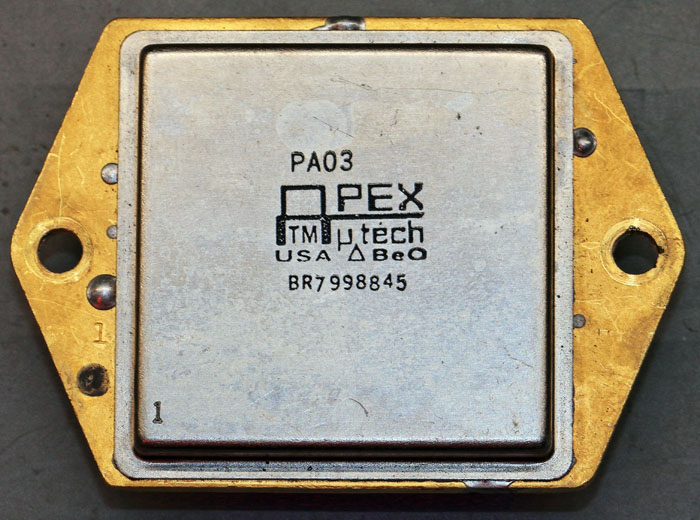
+/-75V, 30A, max. 500W power dissipation and 1MHz cutoff frequency! That´s a power device!

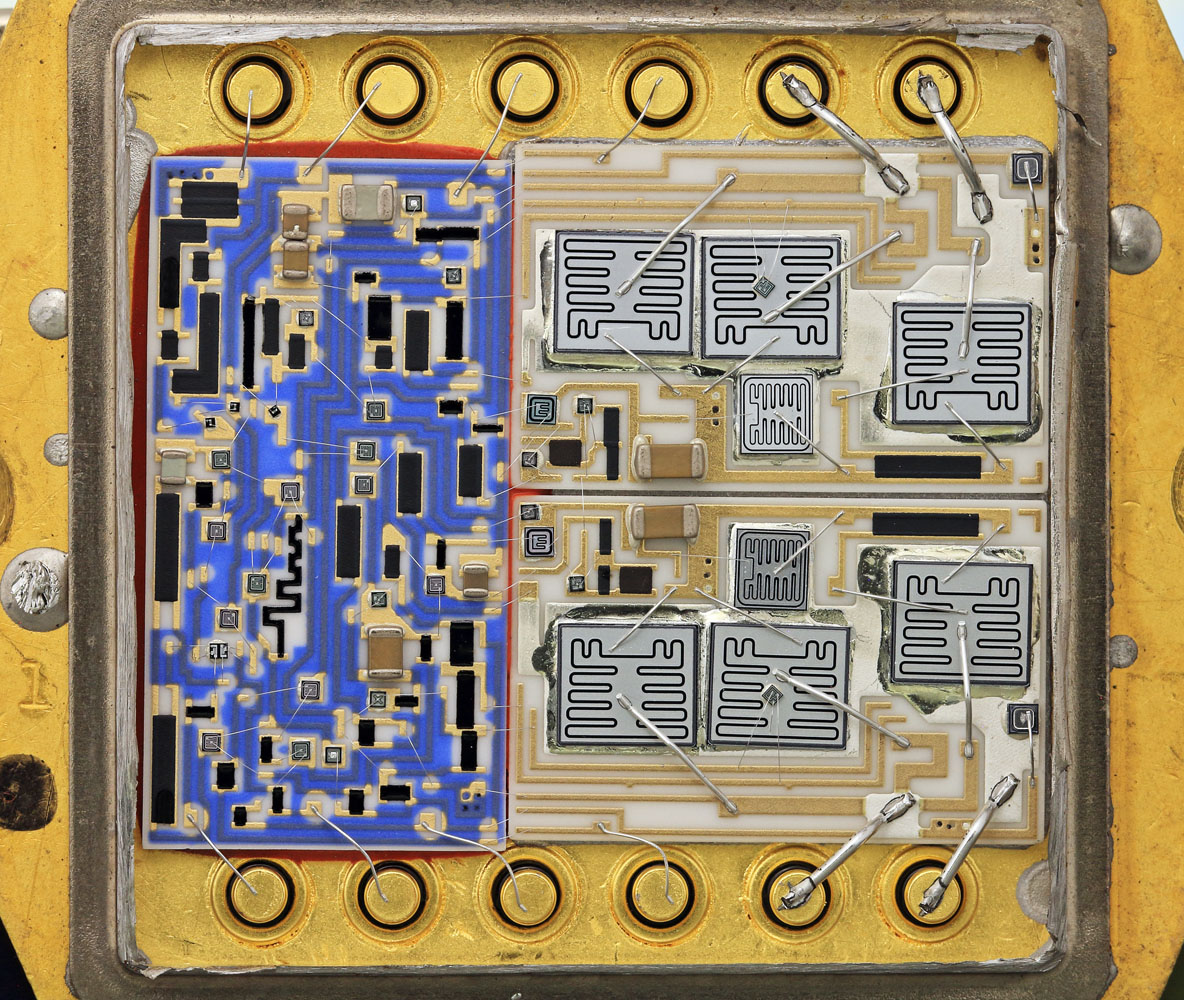
The PA-03 contains three ceramic carrier (beryllium oxide), a highside powerstage, a lowside powerstage and a circuit to control them.
Apex used a lot of different bondwire diameters.
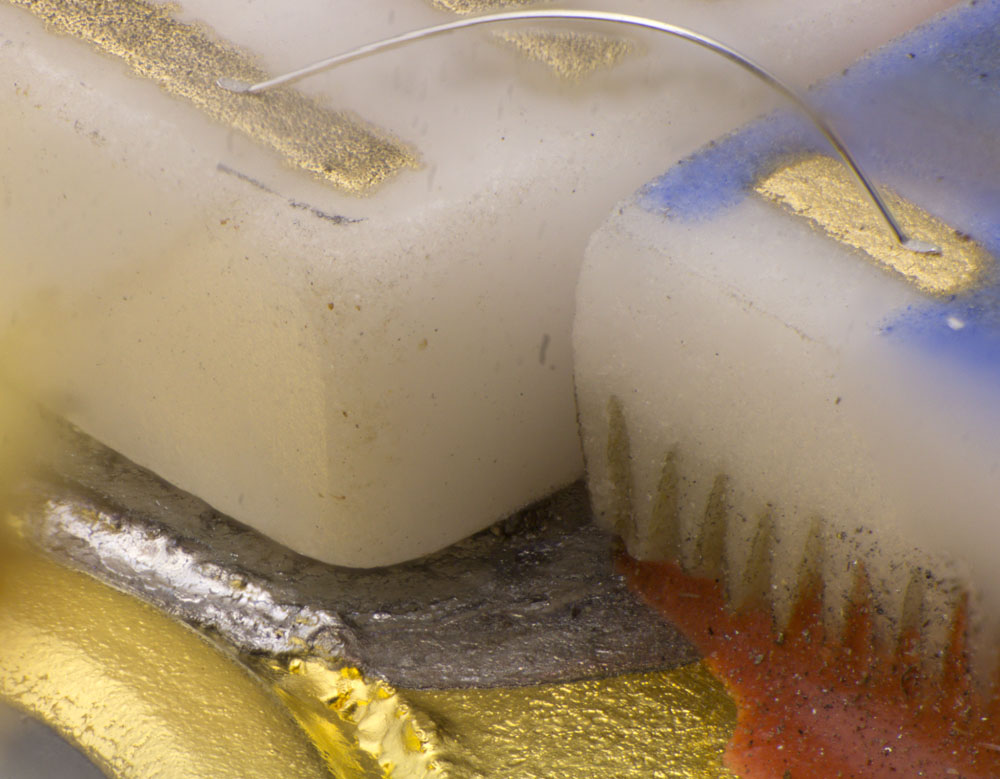
The powerstages were soldered to the package. After that the controlstage was simply glued down. I assume they wanted to protect the controlstage from the heat of the soldering process.
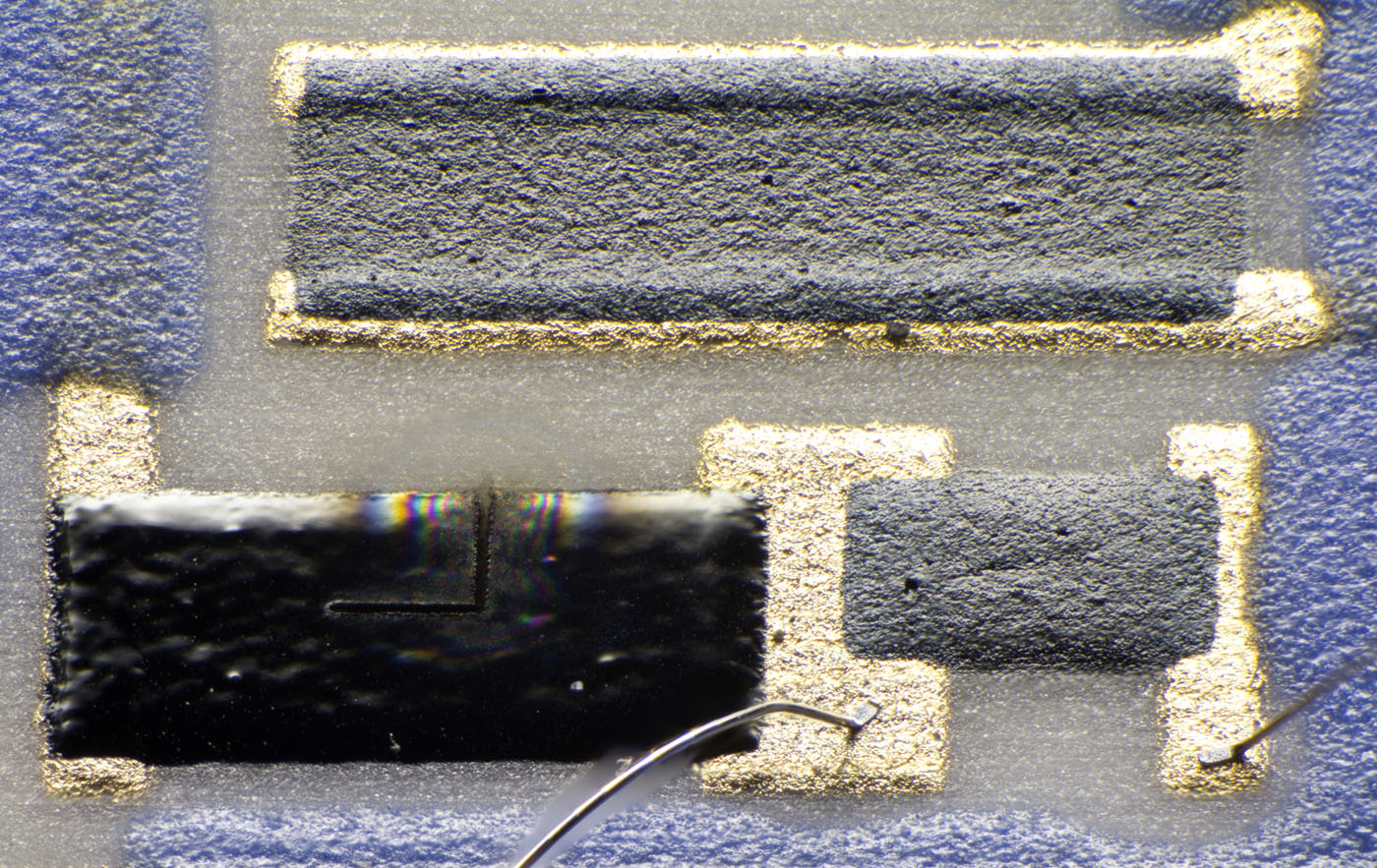
It seems there are three different resistor types, a shiny one, a thin rough one and a thick rough one.
Of course they did laser tuning.
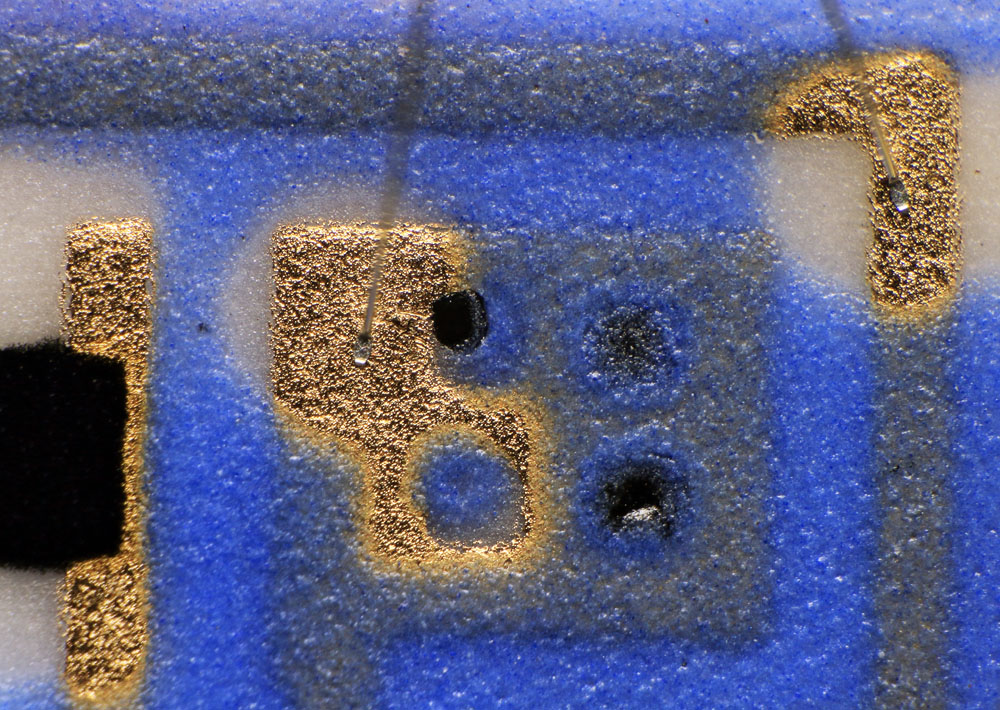
And there are points to identify the aligment of the masks.
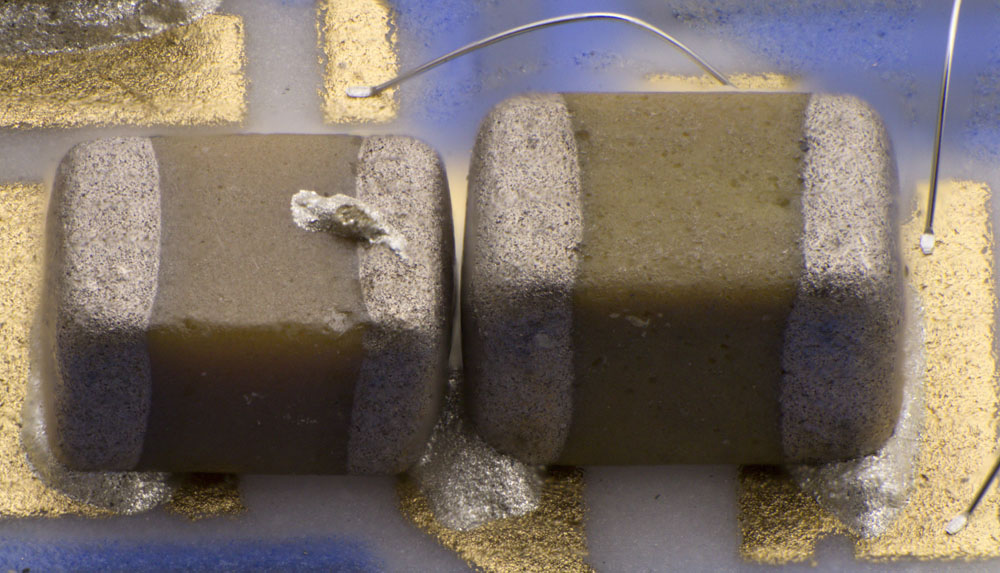
Now that doesn´t look quite robust...

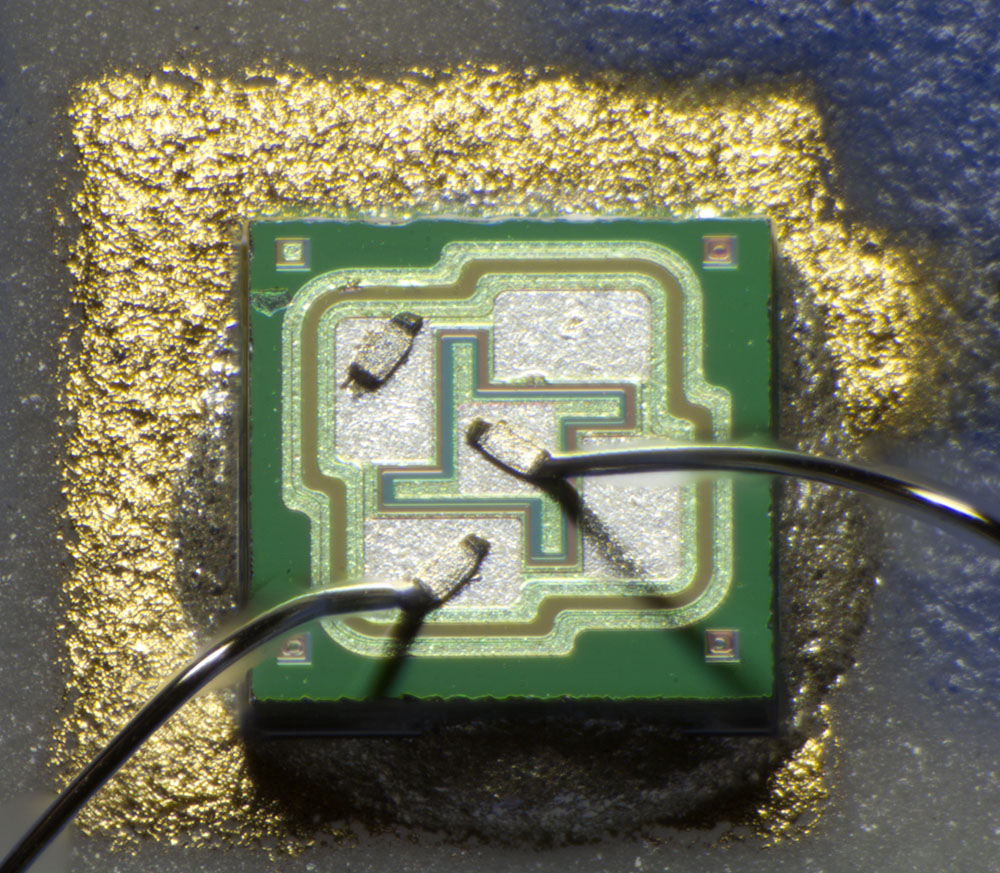
Apex also had problems with the bonding process...
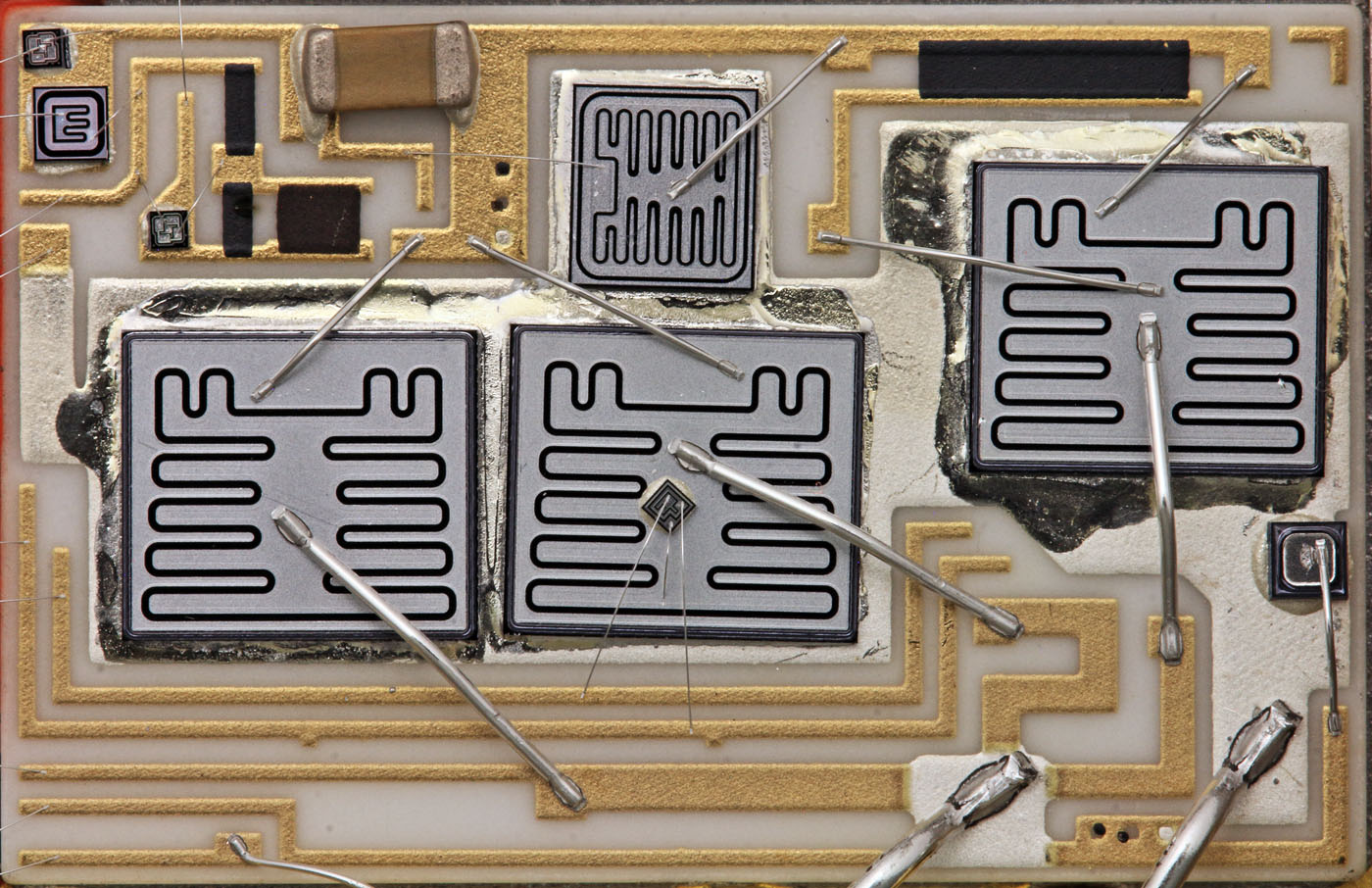
Huuuuuge!

The shunt for overcurrent protection is simply one of the traces leading from a transistor to the output.
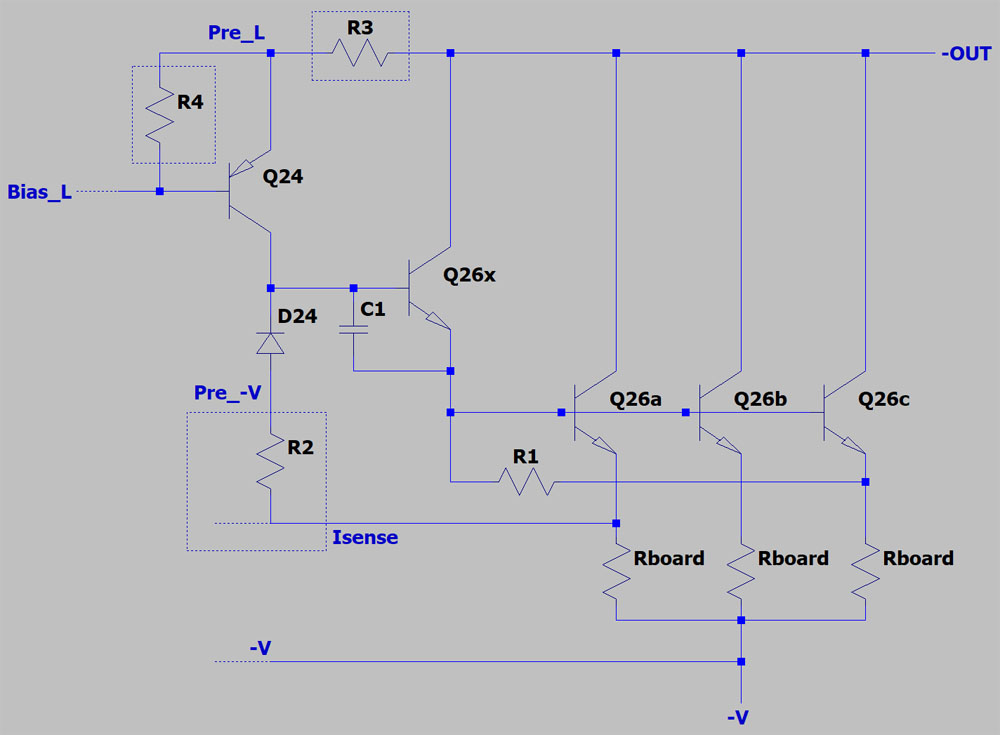
It´s a Sziklai-Darlington-powerstage.
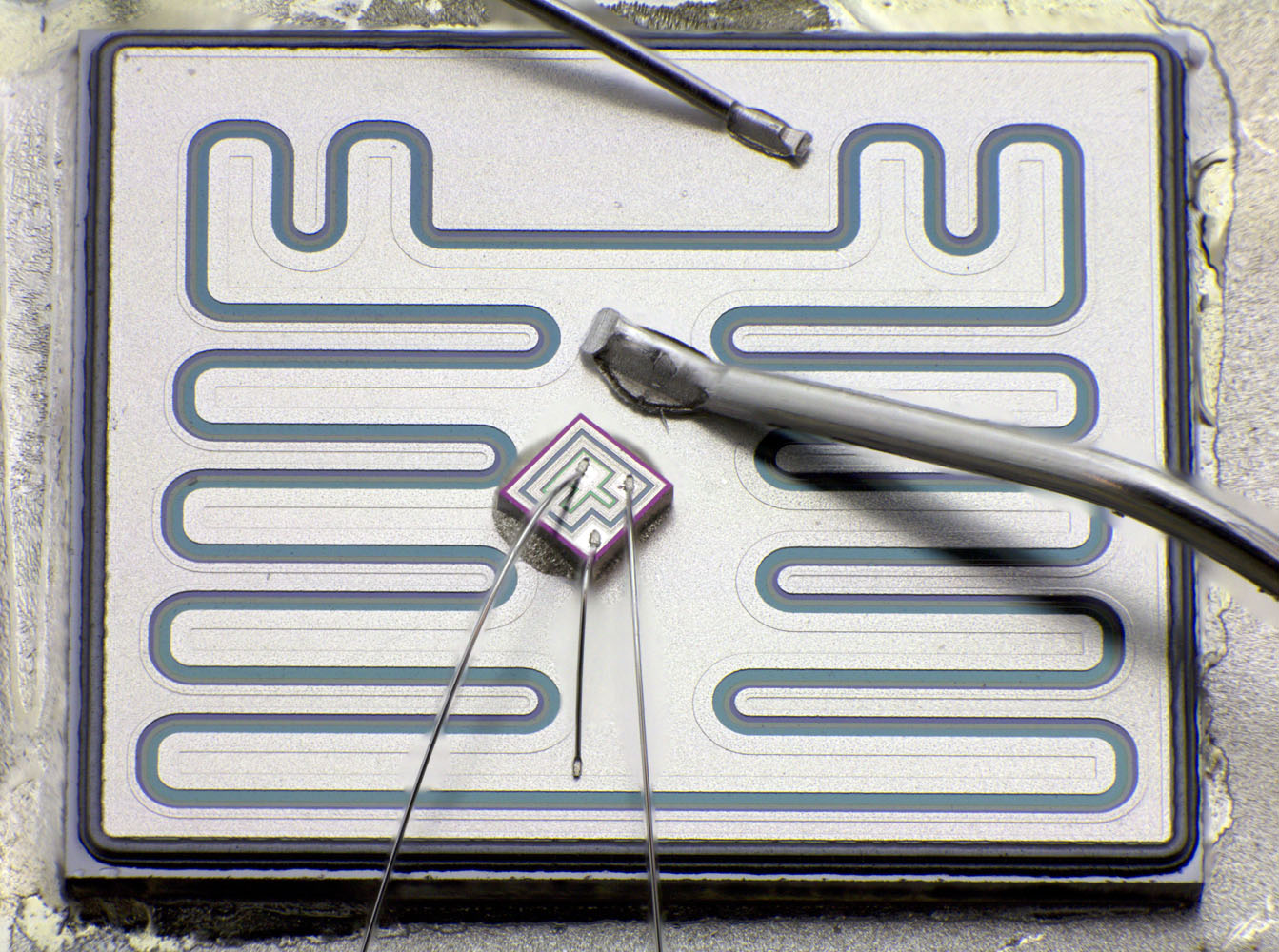
That´s a really good temperature measurement! Datasheet states a response time of 10ms.
You can´t kill the transistors with second breakdown. Second breakdown only is a danger at durations longer than 10ms and there the temperature protection is fast enough.

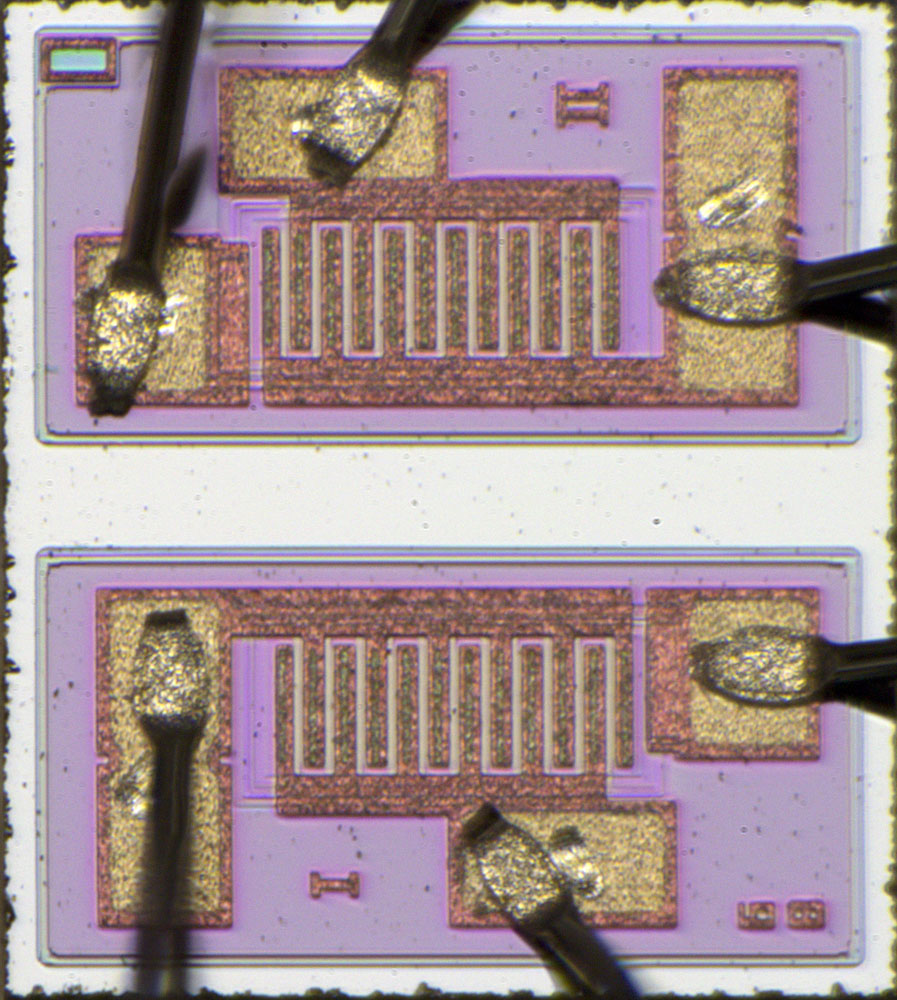
Input stage is of course a Dual-J-FET for most similar characteristics and a similar temperature.
It´s too late for a longer translation. Please use your favourite translator and take a look at a lot more pictures on my website:
https://www.richis-lab.de/Opamp17.htmOf course you can ask me whatever you want here in english.
